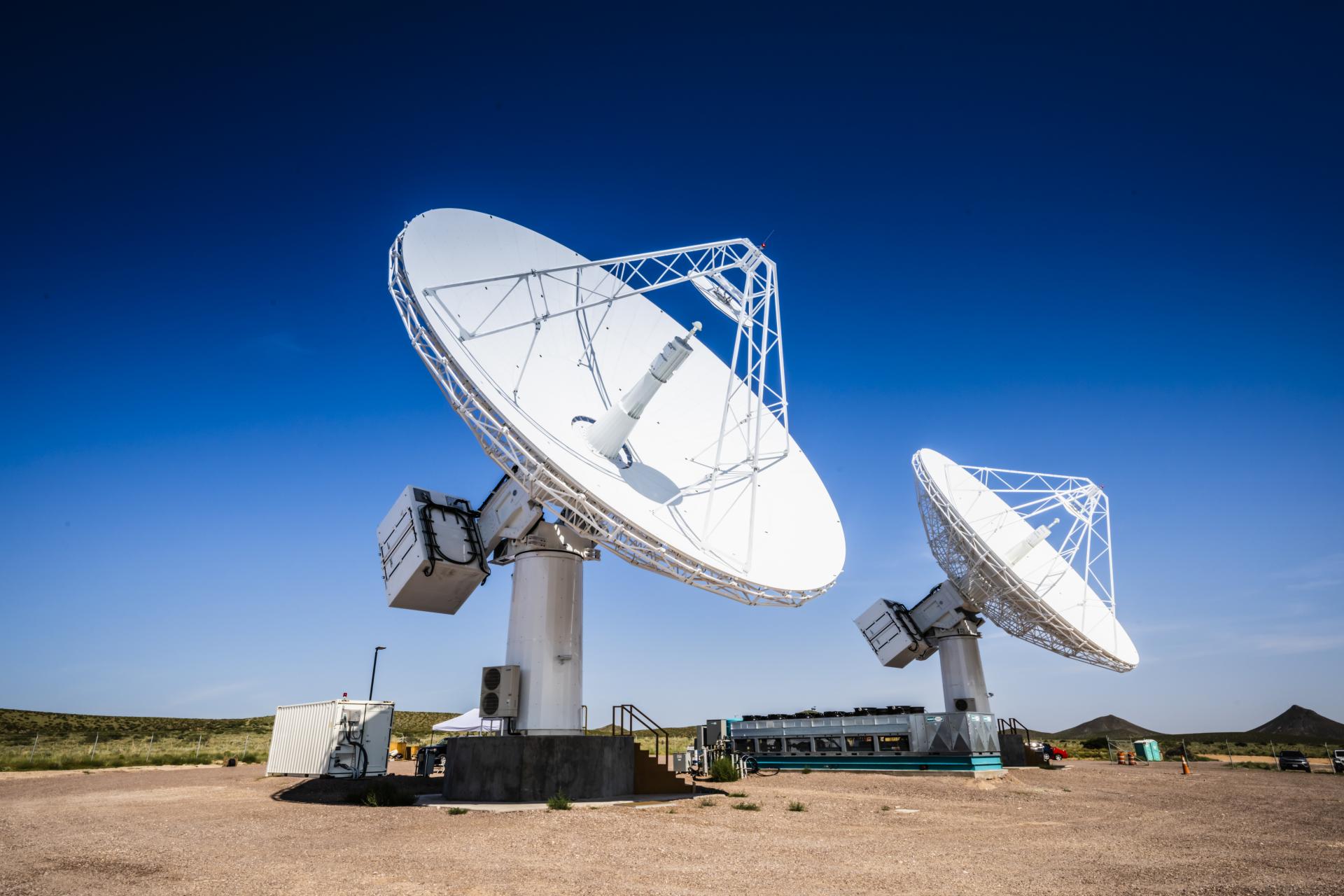· deep dive · 5 min read
Deep Space Advanced Radar Capability (DARC)
How a groundbreaking radar network is transforming our ability to monitor threats in deep space while strengthening international security partnerships

In the vast emptiness 22,000 miles above Earth, thousands of satellites and pieces of debris silently orbit in geosynchronous space – a region critical for global communications, weather monitoring, and national security. Until recently, keeping tabs on these objects was a bit like trying to track fireflies in a dark forest, but only during clear nights. That’s all changing with the Deep Space Advanced Radar Capability (DARC), a revolutionary surveillance system that’s reshaping how we monitor the increasingly crowded and contested domain of deep space.
All Weather Radar
Imagine trying to protect your home, but you can only see intruders when it’s dark and not raining. That’s essentially the predicament space agencies have faced for decades when tracking objects in geosynchronous orbit (GEO).
“DARC will be the first to provide an all-weather, at all times capability in support of the space domain awareness mission that’s critical to national and global security,” said Pablo Pezzimenti, vice president, integrated national systems, Northrop Grumman.
This 24/7, all-weather capability represents more than just a technical improvement – it’s closing a critical security gap. When satellites cost hundreds of millions of dollars and provide essential services from GPS navigation to military communications, blind spots aren’t just inconvenient – they’re dangerous.
Global Undertaking
DARC isn’t just an American project; it’s the product of an innovative partnership between the United States, United Kingdom, and Australia under the AUKUS security pact. This trilateral approach provides something no single nation could achieve alone: constant, overlapping coverage of the entire GEO belt.
The system will ultimately consist of three strategically placed radar sites:
- Site 1 (Australia): Currently under construction in Exmouth, Western Australia with expected initial capability in 2026
- Site 2 (United Kingdom): Planned for Cawdor Barracks in Pembrokeshire, Wales
- Site 3 (United States): Location to be determined
“The use of three sites for DARC will enable 360-degree coverage of the sky at all times of day and under any weather conditions,” notes the UK Ministry of Defence. “The UK’s contribution to this project is therefore crucial to its success.”
Technical Marvel in the Making
What makes DARC so special isn’t just its global footprint but its remarkable capabilities. The system can track objects as small as 10 centimeters in diameter from a distance equivalent to circling Earth’s equator. That’s like spotting a coffee mug in New York while standing in Los Angeles.
DARC achieves this through:
- X-band radar technology that balances resolution and atmospheric penetration
- Distributed array architecture that combines signals to mimic a larger aperture
- Advanced signal processing that can distinguish between multiple objects
- Resilient design to operate in challenging environmental conditions
When complete, DARC will become the largest tracking radar system ever built, capable of simultaneously monitoring hundreds of objects with unprecedented precision.
From Concept to Reality
The journey to DARC began with recognition of a critical vulnerability. Traditional optical systems – telescopes that track satellites by reflected sunlight – simply couldn’t provide continuous coverage. The system took shape through:
- Technology demonstration at White Sands Missile Field in New Mexico (December 2022)
- Contract award to Northrop Grumman for Site 1 development ($341 million, February 2022)
- Critical design review completion (May 2023)
- Site 2 contract award to Northrop Grumman (August 2024)
- Public consultation for the UK site (ongoing through 2025)
With Site 1 on track for completion in 2025, the program has maintained an accelerated pace despite the complexity of international coordination and cutting-edge technology development.
Beyond Observation: Strategic Implications
DARC represents more than just an impressive technological achievement – it fundamentally alters the strategic calculus in space. By eliminating blind spots in deep space surveillance, it:
- Deters potential adversaries from taking hostile actions during periods of limited visibility
- Enhances space traffic management in increasingly congested orbits
- Provides early warning of satellite maneuvers or deployments
- Strengthens allied cooperation through shared awareness and responsibility
- Complements existing Space Surveillance Network (SSN) capabilities focused on lower orbits
The system also addresses a growing concern about the “solar exclusion gap” – periods during equinoxes when the sun’s position disrupts optical tracking of certain orbital regions.
Economic and Local Impact
Major defense projects often bring significant economic benefits, and DARC is no exception. The UK Ministry of Defence notes that the Cawdor Barracks site “will provide employment and upskilling opportunities within the local community across all sectors… including operations and operations management, information technology and high-performance computing, HR, logistics, and facilities.”
Meanwhile, the contract value for just the first site exceeds $341 million, with total program costs estimated at over $1.5 billion across a projected 22-year operational lifespan.
Challenges and Limitations
Despite its groundbreaking capabilities, DARC faces inherent challenges:
- Power and range trade-offs: Radar effectiveness diminishes with distance, making tracking beyond GEO difficult
- Resolution constraints: While excellent for positional tracking, radar provides less detailed imagery than optical systems
- Spectrum congestion: Operating in X-band requires careful frequency coordination to avoid interference
- Logistical complexity: Coordinating three multinational sites introduces challenges in data sharing and maintenance
Yet these limitations pale in comparison to the capability gaps DARC addresses. As one Space Force official noted, “The threat necessitates we build the full DARC system at speed.”
Looking Forward
As DARC progresses from concept to operational capability, it represents a crucial investment in space security for decades to come. In an era when satellites power everything from daily weather forecasts to military operations, comprehensive space domain awareness isn’t just a technical nicety – it’s an essential safeguard for national and global infrastructure.
The system also reflects a broader trend toward multinational collaboration in space security. As space becomes more crowded and contested, no single nation can effectively monitor it alone. DARC’s trilateral approach may serve as a model for future space security initiatives.
With Site 1 nearing completion and work accelerating on Sites 2 and 3, the goal of constant watch on all critical space assets is taking shape. In the not-too-distant future, DARC will ensure that regardless of weather, time of day, or global location, nothing in geosynchronous orbit will escape notice.
For the satellites we depend on – and the societies that depend on them – that continuous watchfulness represents a crucial line of defense in the increasingly complex theater of space.
References

Theodore Kruczek




